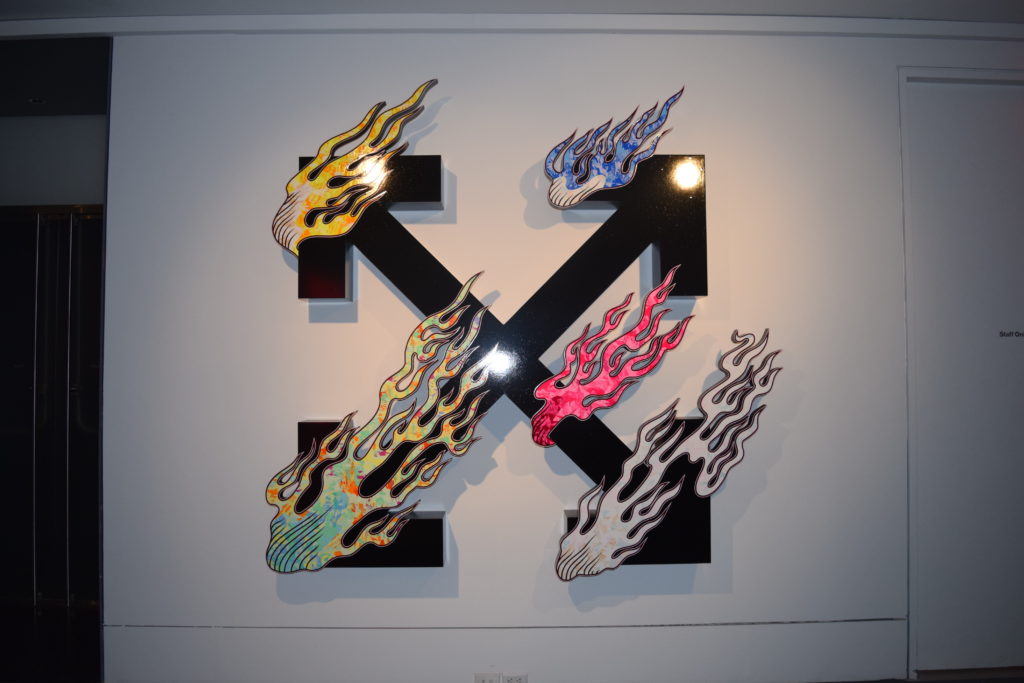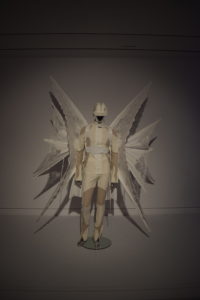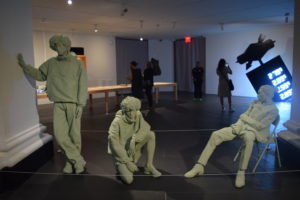‘Figures of Speech’ open now through Jan 29, 2023
Virgil Abloh, a first-generation Ghanaian-American who rose to success as a fashion designer, entrepreneur, and artist, tragically died at the age of 41 after battling cancer.
Although he’s no longer able to share his craft with the world, his vision and art live on at the Brooklyn Museum in an exhibition dedicated to his life: “Virgil Abloh: Figures of Speech.”
The exhibit is organized by Michael Darling, former James W. Alsdorf chief curator at the Muse- um of Contemporary Art Chicago, and the Brooklyn Museum presentation by guest writer and curator Antwaun Sargent.
“When I first started talking with Virgil about this show, I knew the best person to shape our iteration of them was Antwaun… When I would check in with Virgil to hear how the collaboration was going over a period of about two and a half years, he’d beam. He had that great Virgil smile,” Anne Pasternak, the Brooklyn Museum’s Shelby White and Leon Levy director said.
“Virgil always seemed to radiate with excitement, and that was certainly true about this show,” she continued. “He saw his art as a conceptual practice, embodying every artistic medium. Virgil wouldn’t let his practice be put in a proverbial box; his creativity was simply too big to contain, just like his energy.”
Pasternak added that Abloh wanted this installation to happen at the Brooklyn Museum for two primary reasons: to see his work in the context of a museum that rep- resents the best of visual culture in 5,500 years of global creativity, and to open up opportunities for young people, especially BIPOC youth, to express themselves as well as shaping culture and society.
“Figures of Speech” features a wide range of Abloh’s work from throughout his career, including collaborations with artist Takashi Murakami, musician Kanye West, and architect Rem Koolhaas, as well as material from his fashion label Off-White, and designs from Louis Vuitton, where he served as the first Black menswear artistic director.
The exhibit’s focal point, given Abloh’s background in architecture, is his Social Sculpture, located in the center.
Made in collaboration with ALASKA ALASKA, his London studio, “Social Sculpture” is a large, wooden house-like structure with a porch designed for artists, designers, architects, students, ac- tivists and the community to come together.
It was designed with the idea of “negritude architecture” in mind, a term coined by artist David Hammons, which describes “the way Black people make things,” such as houses or magazine stands in Harlem.
The wall text beside the sculpture reads: “Just the way we use carpentry. Nothing fits, but every- thing works. The door closes, it keeps things from coming through. But it doesn’t have that neatness about it, the way white people put things together; everything is a thirty-second of an inch off.”
Sharon Matt Atkins, deputy director for art at the Brooklyn Museum, played a big role in planning the exhibition, as well as working with Sargent and all of the teams involved with its genesis—including Abloh’s team.
She and the museum also worked with MCA Chicago, where the exhibit originally opened.
“We very much had a sense of his vision for what this show should look like, because New York and Brooklyn specifically was so special to him,” Matt Atkins said.
“He really wanted our presentation to be distinctive, and I can say without any question that we have done that,” she continued. “We have fully realized his vision, including the works displayed on the sculptures that appear as tables that are runways that are drafting tables, and the ‘Social Sculpture,’ which is in the center.”
Those interested in seeing Virgil Abloh’s life through his creations are fortunate to have a wide time-frame to catch the exhibit, as it will be on display in the Brooklyn Museum now through Jan. 29, 2023.






